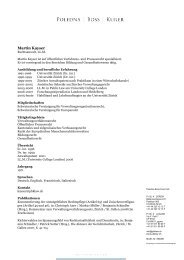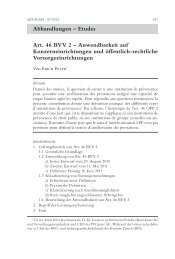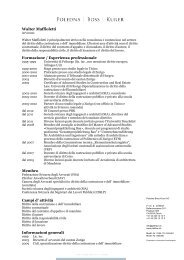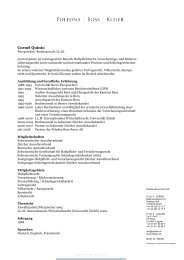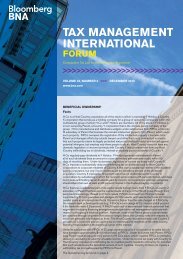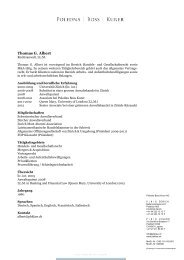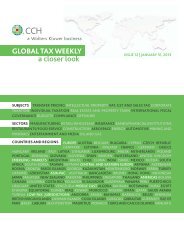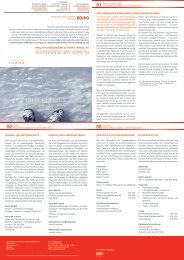721.8 kB - Poledna | Boss | Kurer
721.8 kB - Poledna | Boss | Kurer
721.8 kB - Poledna | Boss | Kurer
- No tags were found...
You also want an ePaper? Increase the reach of your titles
YUMPU automatically turns print PDFs into web optimized ePapers that Google loves.
States generally define "intangible expenses" to includea wide range of items. For example, the Virginiastatutory definition of "intangible expensesand costs" reads as follows:(1) Expenses, losses and costs for, related to, or inconnection directly or indirectly with the director indirect acquisition, use, maintenanceor management, ownership, sale, exchange,lease, transfer, or any other disposition of intangibleproperty to the extent such amountsare allowed as deductions or costs in determiningtaxable income;(2) Losses related to or incurred in connectiondirectly or indirectly with factoring transactionsor discounting transactions;(3) Royalty, patent, technical and copyright fees;(4) Licensing fees; and(5) Other similar expenses and costs. 22States generally define "intangible property" to includepatents, patent applications, trade names,trademarks, service marks, copyrights, trade secretsand similar types of intangible assets.North Carolina takes a more limited approach. Itsaddback provision applies only to "royalty payments"for the use of intangible property in NorthCarolina. For this purpose, royalties include technicalfees, licensing fees and other similar charges,and intangible property includes only trademarks,patents and copyrights. 23 On the other hand, theKentucky addback provision applies not only to intangibleexpenses and interest expenses related tointangible property, but also to management fees. 24The Wisconsin addback provision applies to "interestexpenses, rental expenses, intangible expenses,[and] management fees." 25Definition Of "Related Party"State addback provisions apply to interest expensesand intangible expenses paid or accrued to a relatedparty (typically, referred to as a "related member").The definition of a related member varies from stateto state, but generally means a component memberof a controlled group under Code Sec. 1563 (whichis generally limited to domestic corporations), 26 ashareholder that directly or indirectly owns 50 percentor more of the taxpayer or a corporation thatis 50 percent or more owned, directly or indirectly,by the taxpayer (see Table 2). For purposes of determiningstock ownership, the attribution rulesfound in Code Sec. 318 generally apply. The Oregonstatutory definition of a related member is indicativeof the approach taken by many states, andreads as follows:"Related member" means a person that, with respectto the taxpayer during all or any portion ofthe taxable year, is:(A) A related entity;(B) A component member as defined in section1563(b) of the Internal Revenue Code;(C) A person to or from whom there is attributionof stock ownership in accordance with section1563(e) of the Internal Revenue Code; or39





